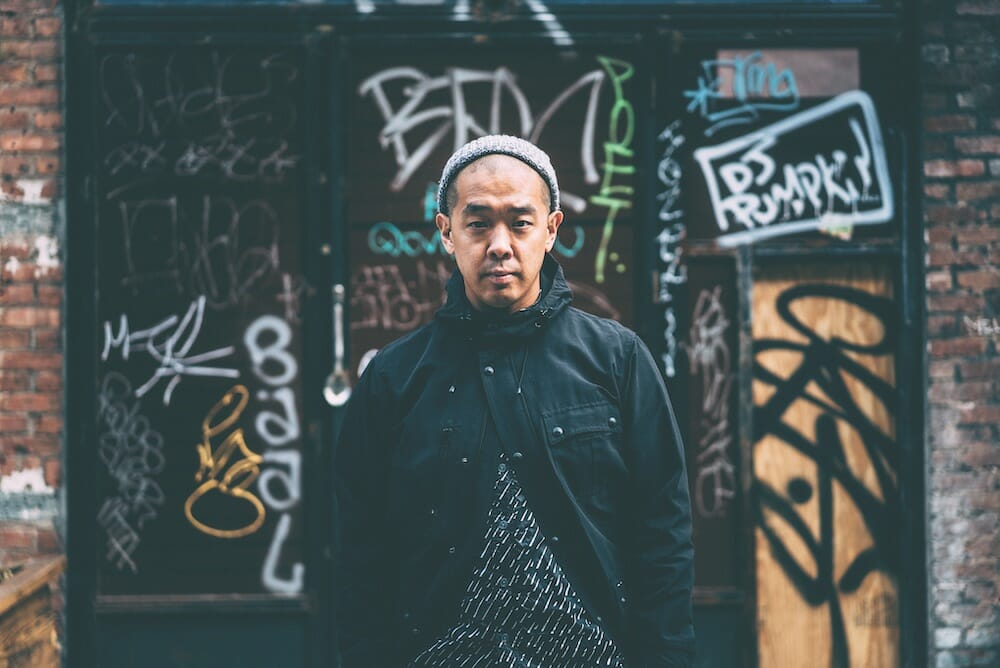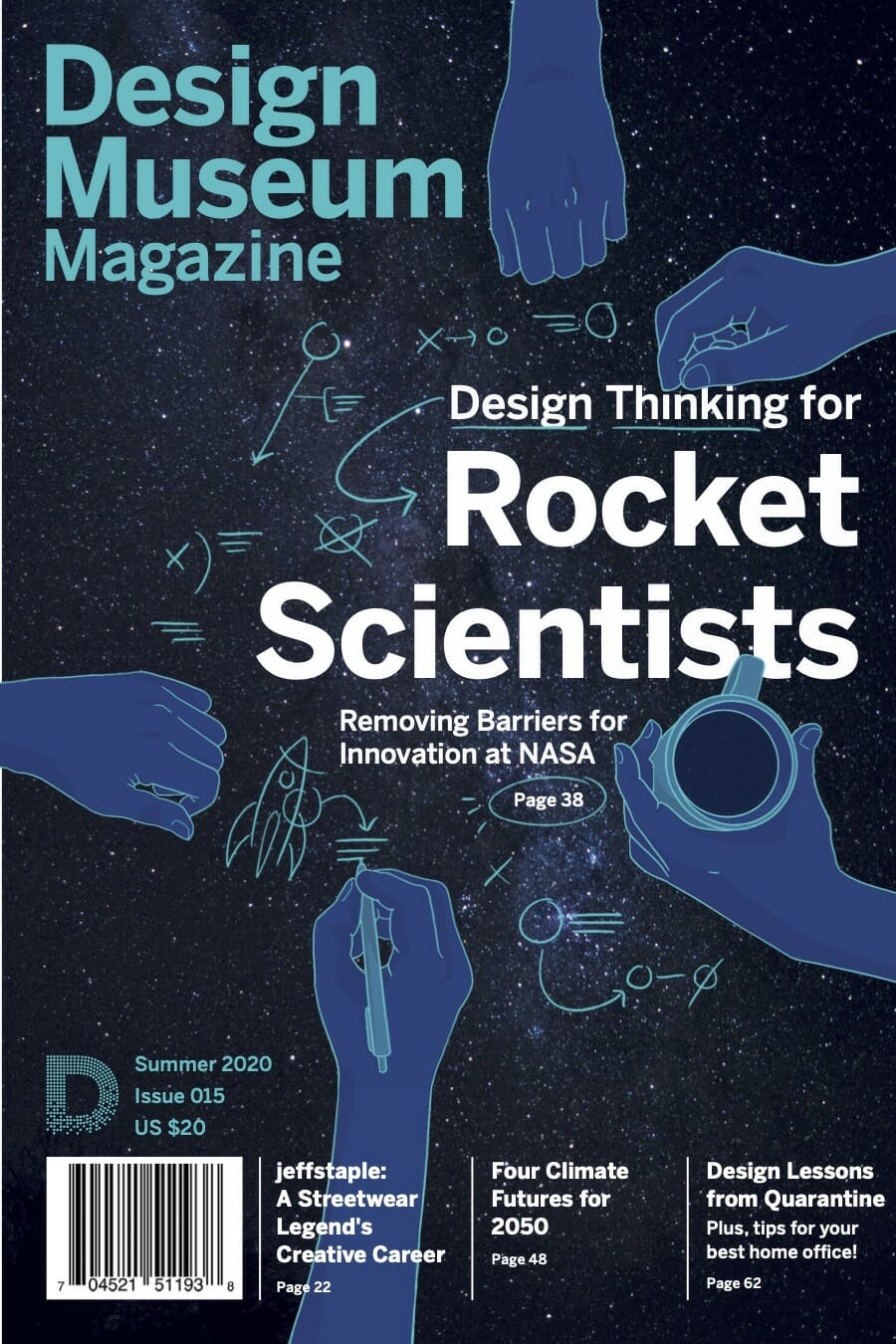Legendary Streetwear
A Profile of jeffstaple
In February of 2005, the shoe that catapulted sneaker culture to the masses was finally released. While not designed to be a hyped icon, this new shoe, named the Pigeon Dunk, was one of the most sought after silhouettes, and the limited number of pairs available caused chaotic scenes to develop in New York’s Lower East Side.

Photo by Brian Alcazar
By Sabaat Kareem and Thais Jacomassi
Outside Reed Space, a now-closed landmark streetwear boutique, people began to pitch tents along the sidewalks days before the release. Through a blizzard, more and more came to await the coveted shoes. When the line got to be over 100 people, the police arrived. Arrest threats were made to those who refused to leave after so many hours of waiting, yet the crowd fought back. While sneaker culture had been largely underground, this riot catapulted it to the limelight. On that February day, jeffstaple became a household name.
Staple Design is a creative firm founded by jeffstaple. Originating in 1997, the New York-based firm works with some of the world’s most prestigious brands on design, identity, and mar-keting. jeffstaple is deemed one of the most in-fluential designers in the streetwear world, and his firm’s expertise is highly coveted by brands like Nike, Adidas, and Puma. In addition to his brand, jeffstaple founded Reed Space, produced a creative magazine called Reed Pages maga-zine, became the creative director of TGS Holdings, Inc. retail outlets, and created his own podcast called Business of HYPE.
The man behind the design giant, Jeff Ng, was born to Chinese immigrant parents who moved to the United States to start a family. He grew up in a middle class, suburban city in central New Jersey as a minority in a predominantly Jewish-Caucasian community. Growing up, Jeff’s world was all about comic books, sports, music, streetwear, and sneakers. He followed athletes’ careers, the shoes they wore, and their collaborations with athletic and fashion brands. He was fascinated by the small differences in products like sneakers and jerseys and became an avid collector. Jeff explained that, more than the actual sport games, he was always interested in the players’ costumes and how they would be marketed. Knowing that his parents wouldn’t finance his shoe obsession, at 13 he took various odd jobs and bought all the newest sneakers from the local mall. Those sneakers were his prized possessions, and he kept them lined along the walls of their dining room on display. Jeff called himself an “extremely average” high school student—“I wasn’t a phenom grow-ing up in the slightest.” At his suburban pub-lic school the curriculum revolved around rote memorization, which Jeff was not interested in and did not excel at. While his parents dreamt of him being a doctor or a lawyer, it became evident that those were not viable paths for Jeff by high school. Back then, Jeff learned the most from his art teacher, Michael Reed, who taught him the difference between being good at tests and being intelligent. His teacher taught him the value of education and opened Jeff’s mind to what it meant to truly intake knowledge.
“My high school art teacher, Michael Reed, was really inspiring. He passed away my senior year, and it was his passion for education and art that pushed me to work even harder and pursue college. I was really into creative writing, but I didn’t think being a novelist could be a real job, so I took up journalism as the next best thing and got into NYU. There were a couple of Asian journalists, like Connie Chung, at the time so my parents were OK with it—if they saw an Asian person do-ing something successfully then they thought I could do it.”
At NYU, Jeff’s world changed drastically. After coming from an overwhelmingly white community, being in a school with a large Asian population helped him embrace his ethnic background. Jeff said he had an identity crisis throughout his adolescence. Out of the 1,600 students at his high school he was one of only three Asian kids. Until attending NYU, he was embarrassed to be Chinese. He didn’t like to speak Chinese or bring Chinese food for lunch. Being a minority among so many students, he was subject to bullying and racist remarks. At NYU he opened up and found he was proud to be Asian. He joined Asian student groups on campus, even those of countries he had no attachment to. He began to really under-stand the personal ramifications of racial ten-sion in the U.S. and reflected on his childhood relationship with race—a mediation that would lead him to success in the next few years. As a student at NYU, Jeff balanced his course work with his job clerking at a graphic design studio and other odd jobs. At his clerking job, his boss saw creative potential in him and began teaching Jeff how to use the Adobe Creative Suite programs (Photoshop, Illustrator, InDesign, etc). Jeff says this was the first time he saw people making a living off of artistry and was enthralled. He decided he wanted a more creative education and tried to transfer to Parsons School of Design, but was not accepted due to his lack of formal art work. Luckily, Jeff found his way into some of the foundation 2D and life drawing courses offered at Parsons, and eventually got into Parsons’ Communication Design program where he excelled. Securing a solid foundation in digital programs, Jeff decided to try something more.
“My second year at Parsons I took a silk screening class and fell in love. I got tired of printing on posters and started printing on clothes. T-shirts and fashion are such a powerful vehicle of communication. If I gave my friend a piece of art printed on a shirt one day it could mean ten thousand people are seeing my design. I was sneaking into the lab at night to make them with a friend since the teacher only let us print on paper in class. Then on March 7, 1997, I was walking around Soho wearing a political shirt I made. A boutique manager asked about it and bought a dozen on the spot. It was my first order, and those 12 shirts sold out in a week. They doubled the order, then another store put in another one, and before you know it, I got a big order from Japan for 1,000 pieces. I knew I couldn’t make that many shirts breaking in at school anymore, so I decided to leave Parsons and pursue this clothing line thing.”
Jeff, shocked at the sudden success of his political designs, committed to the task of branding himself. He picked the name jeffstaple based on the nickname, “Staple,” that his friend made up for him. The success of his Staple clothing line led to Staple Design. Through his school internships, such as his internship at PNB Nation, Jeff learned that effective storytelling plays a vital roll in an artist’s success story. He explained that PNB taught him, “What separates the boys from the men is the ability to market an idea and tell a story.” He used these skills to make sure people were not only buying his designs, but buying a culture and a narrative.
One of his earliest clients was Fadar Magazine. Fadar sent Jeff to Japan to conduct research on the rarity and exclusivity of Japanese Nike products. For the article, Jeff designed layout, did research, and wrote the piece. After an influx of commissioned design work, Jeff released a collaboration with Nike with his signature Pigeon logo. Designed in 2003, the Pigeon Dunk Low took two years to be released in a limited run of 150 pairs. Focusing on the grit and energy of New Yorkers, the Pigeon Dunk was created as a symbol of the New York hustle and remains one of Jeff’s most key legacies. When the shoe came out in 2005, the ensuing frenzy to obtain a pair was dubbed the “Pigeon Riot” and introduced the public to the sneaker craze. Although there was no money spent on marketing the Pigeon Dunk, the shoe is one of the best known icons in streetwear through pure word of mouth. The shoe’s wholesale cost was $30 and sells for over $7,000 today.
While Jeff is considered an influencer, originator, and key opinion leader (KOL),
he has always found the biggest reward through hard work. Jeff explained, “Other people had to tell me I was an influencer. In 2010, someone at Nike told me they have a ranked chart of people who move the needle, called influencers, and I was in the top five. Whenever a company had any initiative that involved trying to capture the youth audience, Staple Design was the go-to.”
He now uses his extensive knowledge and success to guide up-and-coming creative entrepreneurs. He said, “I would love to create platforms where young creatives can access everything I have learned and use that as a starting point so they don’t have to take a de-cade like me.” He thought of creating a podcast as a passion project and like many of his ideas, it quickly became internationally popular. The podcast, Business of HYPE, advises new creatives about the complicated world of design and entrepreneurship. Jeff’s drive to reach out to the next generation comes from his business’ innate connection to youth and youth culture. He explained that as creatives get older they tend to lose their energy and drive, but have decades of wisdom and experience. Young creatives have limitless drive, but little experience and knowledge. To Jeff, helping young people is a two-way street, as the young people bring the raw energy while he provides the insight. In the future, he hopes to be able to streamline communication between these two groups by finding an effective platform to broadcast information.
